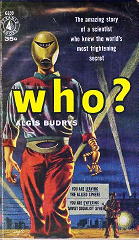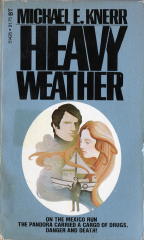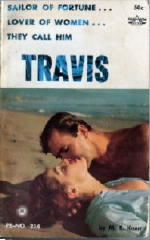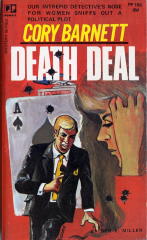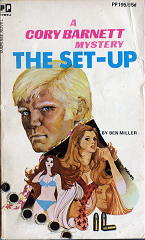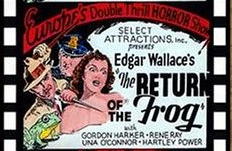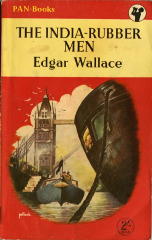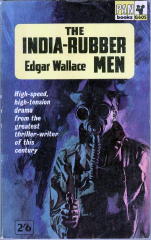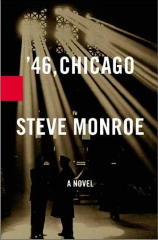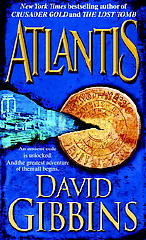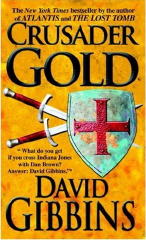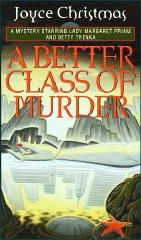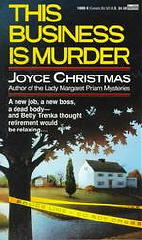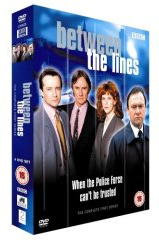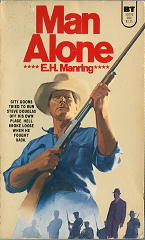Tue 10 Jun 2008
Movie Review – THE MAN I LOVE (1947).
Posted by Steve under Authors , Crime Fiction IV , Crime Films , ReviewsNo Comments
THE MAN I LOVE. Warner Brothers, 1947. Ida Lupino, Robert Alda, Andrea King, Martha Vickers, Bruce Bennett, Alan Hale, Dolores Moran. Based on the novel Night Shift, by Maritta Woolf. Screenplay by Jo Pagano, Catherine Turney & W. R. Burnett (the latter uncredited). Director: Raoul Walsh.
Believe it or not, the book this movie is based on is still in print (Scribner, trade paperback, 2006). From the Amazon description:
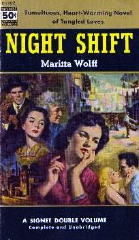
“Sally Otis works herself to the bone as a waitress, supporting her three children and a jobless younger sister. With her bills mounting and no rest in sight, Sally’s resolve is beginning to crumble when her swaggering older sister, Petey Braun, appears on the scene. Petey, with her furs and jewels and exotic trips, is an American career woman — one who makes a career of men. But when Petey gets a gig at the glamorous, rowdy local nightclub, it will forever alter the world of the struggling Otis family.
“A swift-paced tale full of tension, excitement, violence, and even bloodshed, Night Shift possesses the vividness of a documentary and the page-turning quality of the best commercial fiction — even decades after its first publication.”
Night Shift is not included in Al Hubin’s Revised Crime Fiction IV, but Whistle Stop is, although only marginally:
WOLFF, MARITTA M(artin). 1918-2002.
-Whistle Stop (Random, 1941, hc) [Michigan] Film: United Artists, 1946 (scw: Philip Yordan; dir: Leonide Moguy).
Whistle Stop the movie starred Ava Gardner and George Raft – now there’s a combination, for you – and IMDB describes the plot thusly:
This latter film is available on DVD, most easily by means of one the various box sets of Noir Films that everybody seems to be packaging together these days.
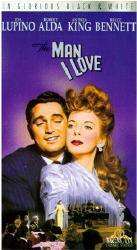
Both Jo Pagano and Catherine Turney have one book each in CFIV. For the former, it’s The Condemned, filmed in 1951 as Try and Get Me; for the latter, it’s The Other One, filmed in 1957 as Back from the Dead. Everybody reading this knows W. R. Burnett, or should, and of course in our circle director Raoul Walsh is even more well known, the circle being, of course, the extended realm of crime, mystery and adventure fiction.
Which is a long, long introduction to convince myself, first of all, then maybe you, that The Man I Love actually belongs and should come up for discussion in a mystery-oriented blog.
I’ll keep writing, and later on, I’ll ask what you think.
The basic synopsis of the story as being the same as the book, as stated above. Ida Lupino is Petey Brown (not Braun; that was changed, for obvious reasons), the nightclub singer from New York who comes to visit her family in California and decides that their problems might as well be hers for a while. Robert Alda plays Nicky Toresca, the slick-talking nightclub owner she goes to work for, a man who’s hot for every woman he knows and meets, including Petey’s married sister, until the former puts an end to that.
Not mentioned in the Amazon description is former jazz pianist San Thomas, played in solid if not stolid brooding fashion by Bruce Bennett (formerly Herman Brix, but who turned out to be an actor after all). Petey has been dallying around with her boss on a strictly hands-off basis – perhaps the only woman who’s been able to handle him that way – but when she meets San, it is lust at first sight, movie code or no.
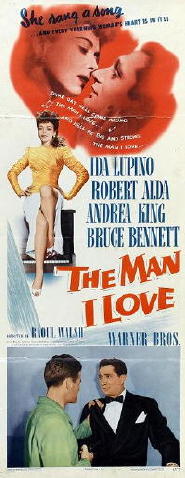
Turns out, though, that San has baggage of his own. He’s divorced but still loves his wife who dumped him, and he’s currently but only temporarily AWOL from the Merchant Marine. There’s more. The woman living across the hall from Petey’s sister is bored with her marriage and her small twin babies, and she’s cheating on her husband, who’s a naively nice guy that Petey’s younger sister has eyes for.
I think you have the picture by now. There is way too much plot to be covered adequately in one ninety minute movie, but what this is is obviously drama of the soap opera variety, gussied up a bit for the night time audience. Is it also a crime movie, as IMDB says it is? Not a bit of it.
But is it Noir, as IMDB also suggests? Yes, absolutely, not completely, but yes. It’s the lighting. It’s the location. (Outside of the drab apartment where the Otis family lives, nightclubs and after-hours jazz spots predominate, with the opening scene worth 100% of the price of admission. Even though Ida Lupino is only lip-synching the words, the music is terrific).
It’s also the sense of quiet desperation that exists in these people’s existences. It’s the ray of hope that exists and blooms in one area of their lives, only to diminish in another.
So noir, yes. A crime film, no. I wish I could find a longer clip, but this one will have to do. It’s about the only scene of almost actual violence in the movie, and in it Petey stops the husband next door from committing a real act of violence on Nicky, the nightclub owner. If you haven’t seen it, you’ve never seen anything like it, and even if you have, you still haven’t seen anything like it.
Are you back? To get back to the question I told you I was going to ask later, what do you think?
